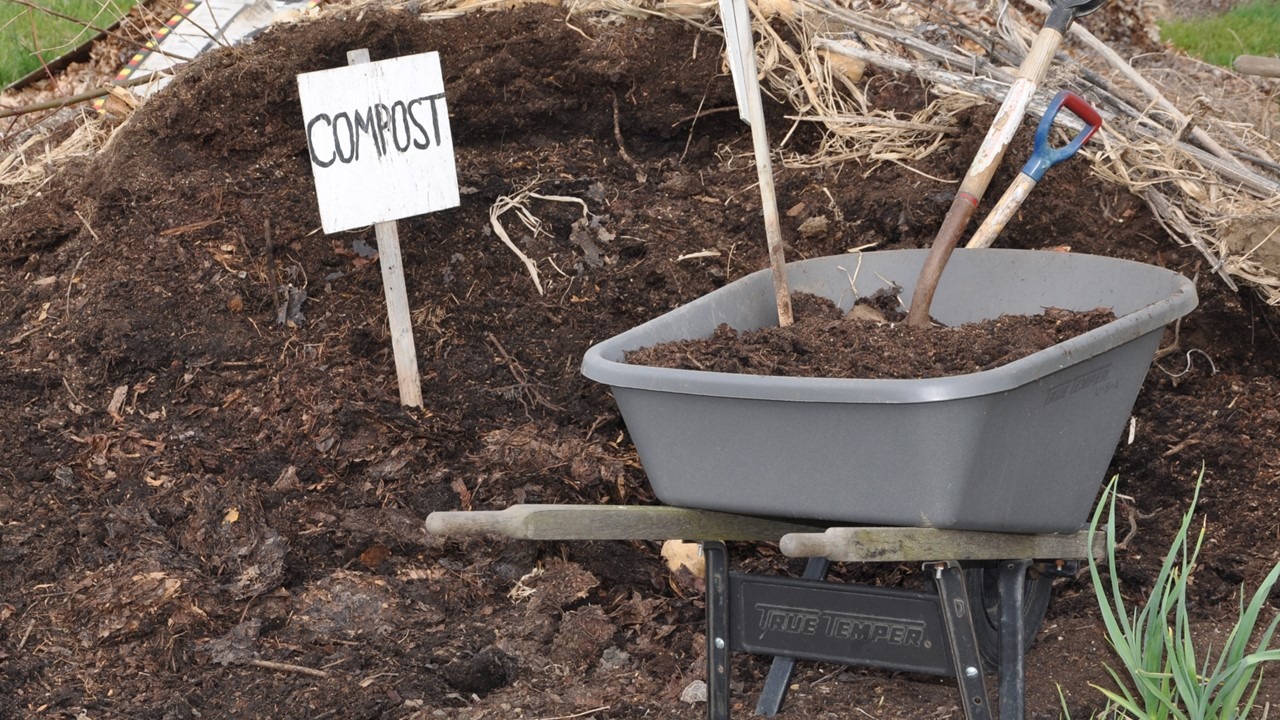Due to the constantly increasing population on Earth, the environment is gradually becoming overburdened and people are beginning to realize the importance of sustainable development. As the authority in promoting collaborations on international agendas, the United Nations launched the Sustainable Development Goals (SDGs) in 2015, featuring 17 issues that must be given attention or improved, encompassing three major dimensions of the environment, society, and economy. The development guidelines of numerous countries and enterprises around the world are designed to be as closely related to the SDGs as possible. This article will explain the SDGs in detail and their importance to us.
What is sustainable development?
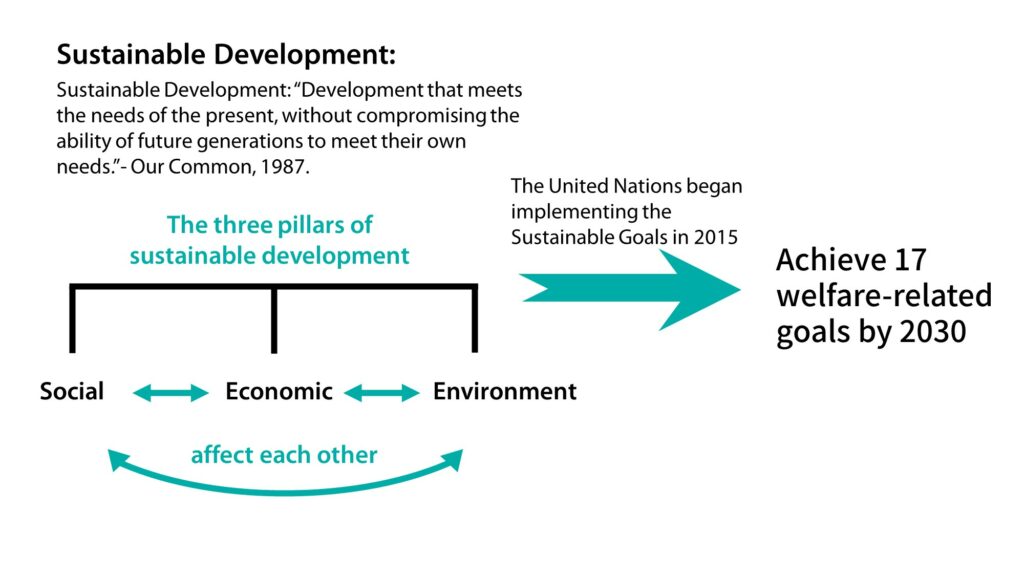
After World War II, cars, home appliances, and boutique clothing became more accessible to ordinary citizens thanks to flourishing economic development. However, these activities resulted in egregious abuse of resources and pollution. In addition, factors such as wealth inequality exacerbated by capitalism, the spread of communicable diseases through international transportation, hatred between different races and religions, and labor exploitation all caused social and economic turmoil. In 1983, the UN invited Gro Harlem Brundtland, former Prime Minister of Denmark, to form a committee, which published Our Common Future (also known as the Brundtland Report) in 1987. The report described the problems faced by the world at the time and proposed a solution in the form of sustainable development. Sustainable development is defined as “Development that meets the needs of the present, without compromising the ability of future generations to meet their own needs.”Subsequently, the definition is used as the foundation for devising various sustainable development methods.
What are the Sustainable Development Goals?
The SDGs were signed by 193 countries that agree to achieve 17 welfare-related goals by 2030 in the hope of eliminating poverty, increasing everyone’s living standards and welfare, fostering a more inclusive society, and reversing the trend of environmental degradation.
The association between these 17 SDGs serves as a blueprint to realize a better, more sustainable future by providing a set of global regulations and standards, relying on the collective endeavors of countries around the globe while taking into consideration their respective conditions. For example, poorer countries may need to consider SDG 1 No Poverty as their priority, hence they will focus on economic development, education, and employment (SDGs 4, 8, and 9) in an attempt to satisfy social needs while protecting the environment to the best of their abilities at the same time.
The three pillars of sustainable development
Sustainable development is divided into the three pillars of society, economy, and environment. These three pillars affect one another, so if a certain pillar is improved, positive influence will be exerted on the other two pillars. However, if one of the pillars cannot be developed sustainably, it will have negative impacts on the other two pillars.
1. Social
The social facet mainly concerns social issues such as peace and safety, healthcare systems, wealth inequality, and legal systems to prevent problems such as war, disease, or ethnic conflict.
2. Economic
The economic facet mainly concerns whether the environment, labor, and local community rights are affected in the pursuit of economic growth. This is to ensure sustainable development while meeting people’s needs and maintaining progress.
3. Environmental
The environmental facet mainly concerns greenhouse gas emissions, water resources, and the preservation of the natural environment. This is to mitigate the rate of climate change and make sure that everyone can enjoy clean water and a livable natural environment.
For the importance of sustainable development and how to proceed, please read this article: THE IMPORTANCE OF SUSTAINABLE DEVELOPMENT AND THE THREE PILLARS.
Implementation of the Sustainable Development Goals
Since the SDGs were launched in 2015, less than half the time remains until the commitments must be realized in 2030. In 2020, the UN launched the Decade of Action to urge the world to expedite their sustainable solutions on the three levels: global action, local action, and people action. This is to ensure the SDGs are supported by sufficient resources, strong leadership, and smart solutions and that these transformations are incorporated into local authorities’ policies and that action is taken with different groups, media, enterprises, associations, academia, and individuals to implement the changes needed.
The China-United States trade war (2018), COVID-19 (2019), and Russia-Ukraine war (2022) have severely affected the advancement of the SDGs. The three incidents’ earliest impact on economic development, health, and infrastructure quickly spread to environmental, economic, and human rights-related crises, making the materialization of the SDGs even more urgent. It is necessary to maintain past achievements as much as possible in order to realize the SDGs by 2030 in the Decade of Action.
The 17 Sustainable Development Goals
No poverty
Zero hunger
Good health and well-being
Quality education
Gender equality
Clean water and sanitation
Affordable and clean energy
Decent work and economic growth
Industry, innovation and infrastructure
Reduced inequalities
Sustainable cities and communities
Responsible consumption and production
Climate action
Life below water
Life on land
Peace, justice and strong institutions
Partnerships for the goals
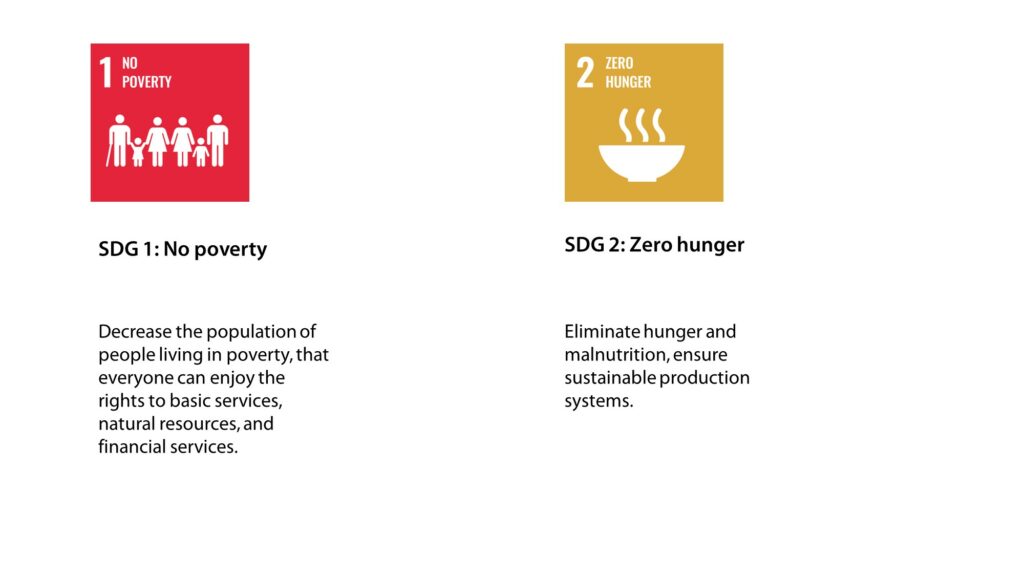
SDG 1: No poverty
Nearly half of the global population lives in poverty, of which 10%, or over 700 million people, live in extreme poverty on less than US$1.9 a day. In particular, one-fifth of children live in extreme poverty. SDG 1 hopes to decrease the population of people living in poverty by half before 2030 to ensure that everyone can enjoy the rights to basic services, natural resources, and financial services.
To realize this goal, it is imperative to strengthen collaboration between countries and mobilize resources for developing countries to carry out relevant plans and policies within a reasonable policy framework.
SDG 2: Zero hunger
Currently, approximately 690 million people are suffering from hunger, accounting for 8.9% of the global population, and the number is gradually increasing. The world population is expected to increase by two billion by 2050, hence it is essential to increase agricultural production and sustainable food production to provide people with sufficient nutrition.
SDG 2 seeks to bolster rural infrastructure and agricultural technology, as well as preventing international trade restrictions on agricultural markets, and eliminate hunger and malnutrition by 2030. Furthermore, the aim is to double agricultural production, ensure sustainable production systems, and create agricultural systems capable of withstanding extreme weather and natural disasters.
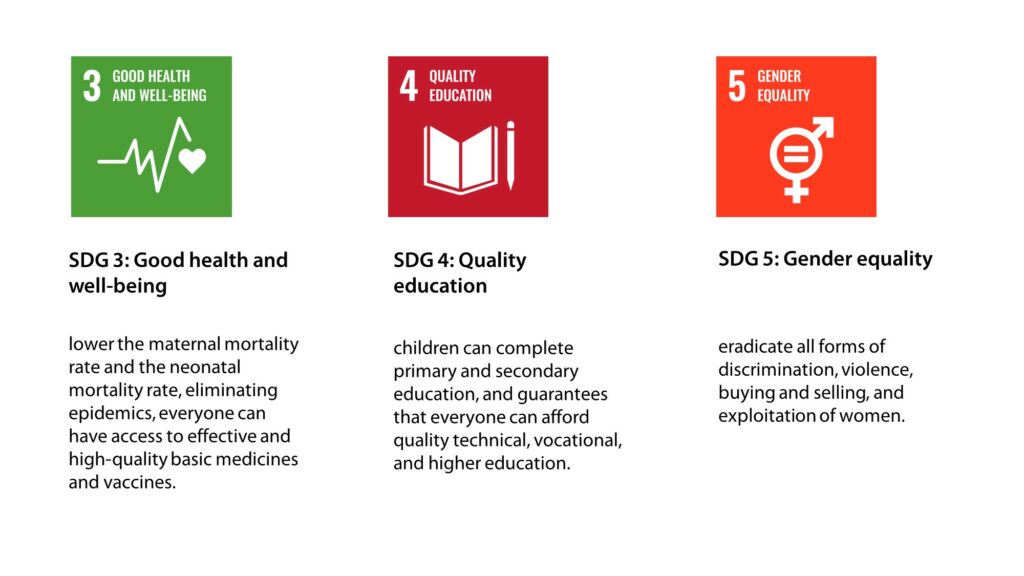
SDG 3: Good health and well-being
Before COVID-19, people made advances in increasing life expectancy and reducing common illnesses. However, the health catastrophe brought about by COVID-19 serves as a reminder of the importance of our ability to respond to sudden outbreaks of communicable diseases. SDG 3 hopes to lower the maternal mortality rate to under 70 per 100,000 and the neonatal mortality rate to less than 12 per 1,000 by 2030, as well as eliminating AIDS, tuberculosis, malaria, and other epidemics and reinforcing the control of drug abuse, alcohol, and tobacco, so that everyone can have access to effective and high-quality basic medicines and vaccines.
SDG 4: Quality education
Education is the key to eliminating poverty, but nearly 260 million children did not go to school in 2018, accounting for nearly one-fifth of the global school-age population. Also, COVID-19 resulted in the closure of schools, affecting more than 91% of students globally. Now, remote learning and back-to-school assistance system are used to prevent a surge in dropout rates when schools reopen. It is hoped that by providing child-, disability-, and gender-friendly educational facilities, as well as increasing the number of qualified teachers and scholarships, all children can complete primary and secondary education before 2030. This ensures literacy and numeracy for young people and the vast majority of women and men and guarantees that everyone can afford quality technical, vocational, and higher education.
SDG 5: Gender equality
Gender equality is a basic human right, yet discriminatory laws and social norms are widespread, and the ratio of women in the decision-making class is generally underrepresented. There are 750 million women in the world who are married before the age of 18, and one-fifth of women aged 15 to 49 are victims of physical or sexual violence by their intimate partners. SDG 5 hopes to reform the laws of different countries so that women can have equal access to economic and natural resources. The aim is also to eradicate all forms of discrimination, violence, buying and selling, and exploitation of women.
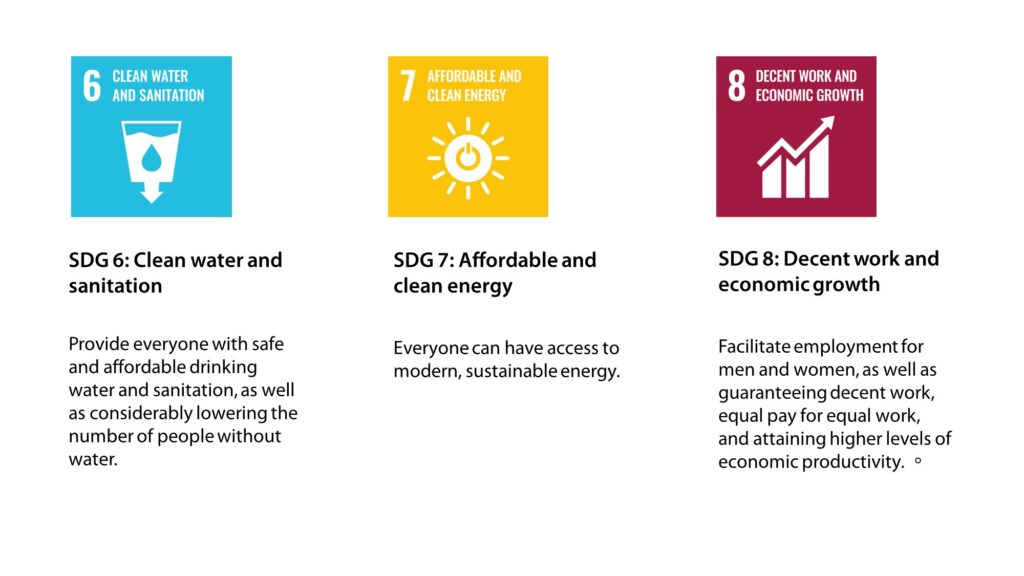
SDG 6: Clean water and sanitation
Currently, one-third of the global population is without safe drinking water, and water shortage is affecting more than 40% of people in the world. In addition, 2.4 billion people lack basic sanitation facilities, and over 80% of the wastewater generated by human activities is discharged into rivers or oceans untreated. SDG 6 hopes to enhance water resource management and the utilization rate to provide everyone with safe and affordable drinking water and sanitation, as well as considerably lowering the number of people without water.
SDG 7: Affordable and clean energy
At present, 13% of the global population is without modern power, while three billion people still rely on burning wood, charcoal, or animal dung for cooking or heating. SDG 7 hopes to accelerate the development of energy technologies and facilitate investments in energy infrastructures and technologies so that everyone can have access to modern, sustainable energy.
SDG 8: Decent work and economic growth
Economic growth can promote progress and improve global living standards. However, the current global gender pay gap is 23%, and the female labor force participation rate is only 63%. SDG 8 hopes to facilitate employment for men and women through youth employment, maintaining labor rights, and encouraging entrepreneurship, as well as guaranteeing decent work, equal pay for equal work, and attaining higher levels of economic productivity.
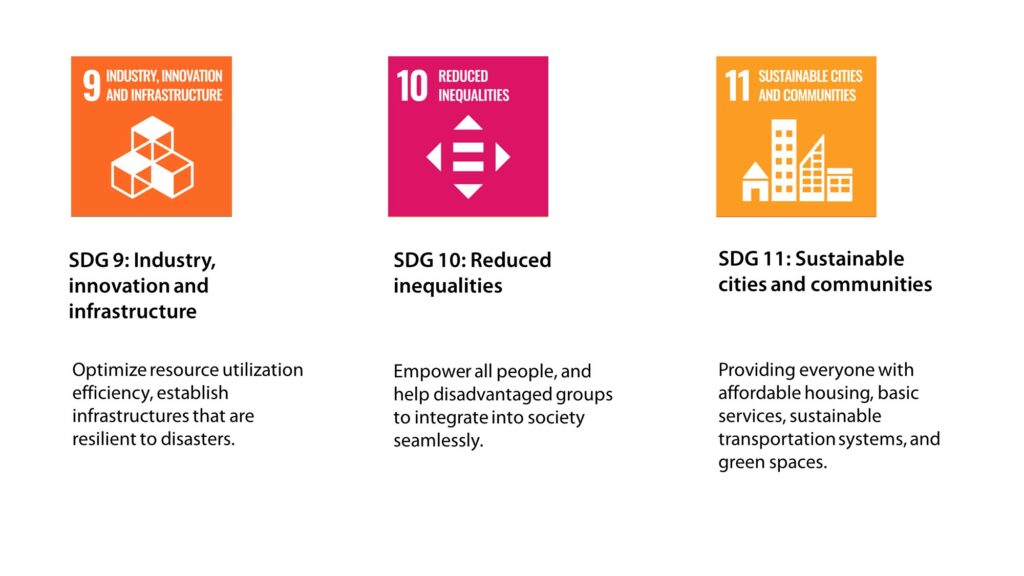
SDG 9: Industry, innovation and infrastructure
Sustainable industrialization and infrastructure help to elevate economic competitiveness and generate employment and income for people. SDG 9 hopes to foster sustainable industrialization and optimize resource utilization efficiency, as well as offering developing countries financial and technical support in a bid to establish infrastructures that are resilient to disasters.
SDG 10: Reduced inequalities
The mortality rate of children under the age of five among the poorest 20% of the population in developing countries is three times that of children among the richest 20% of the population. Hate speech against underprivileged groups such as refugees, indigenous people, immigrants, the elderly, and people with disabilities is on the rise; inequality tends to exacerbate ethnic conflict. SDG 10 hopes to realize equality through policy revisions, empower all people, and help disadvantaged groups to integrate into society seamlessly.
SDG 11: Sustainable cities and communities
The degree of urbanization in the world is increasing constantly. Currently, more than half of the global population lives in cities. Although urbanization can expedite economic development, it is often accompanied by problems such as waste disposal, sanitation systems, air pollution, and insufficient transportation facilities. SDG 11 hopes to safeguard the world’s cultural and natural heritage, as well as providing everyone with affordable housing, basic services, sustainable transportation systems, and green spaces.
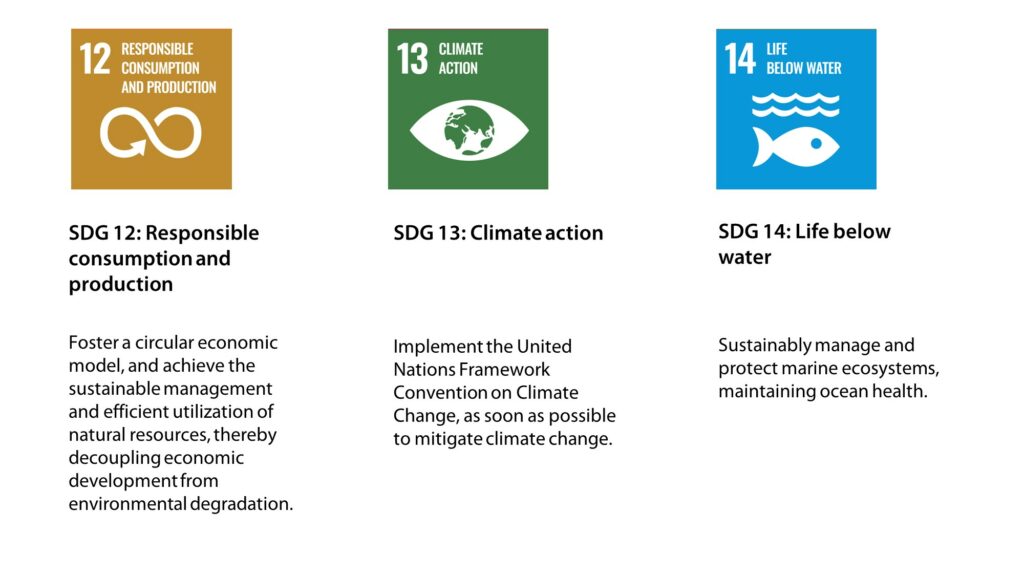
SDG 12: Responsible consumption and production
Consumption and production drive the economy, but they are wreaking havoc on Earth because they are coupled with the degradation of the natural environment and resources. SDG 12 hopes to reduce fossil fuel subsidies, create jobs in local cultural tourism sectors, bolster scientific and technological skills, foster a circular economic model, and achieve the sustainable management and efficient utilization of natural resources, thereby decoupling economic development from environmental degradation.
SDG 13: Climate action
Since 1990, global CO2 emissions have increased by almost 50%. Climate change affects every country, destroys the economy and the environment, and impacts people’s lives. SDG 13 hopes to implement the United Nations Framework Convention on Climate Change, reinforce education and publicity on climate change, and strengthen the ability to respond to climate disasters. The aim is also to inject capital into the Green Climate Fund as soon as possible to mitigate climate change.
SDG 14: Life below water
The ocean exerts influence over multiple climate systems on Earth, making it an important environmental regulator. In addition, it also provides diverse food sources and natural resources and makes up 97% of all water resources on the planet. More than three billion people’s livelihoods rely on the ocean and coastal organisms. SDG 14 hopes to minimize marine debris and nutrient pollution in an effort to sustainably manage and protect marine ecosystems, as well as decreasing the impact of ocean acidification and maintaining ocean health.
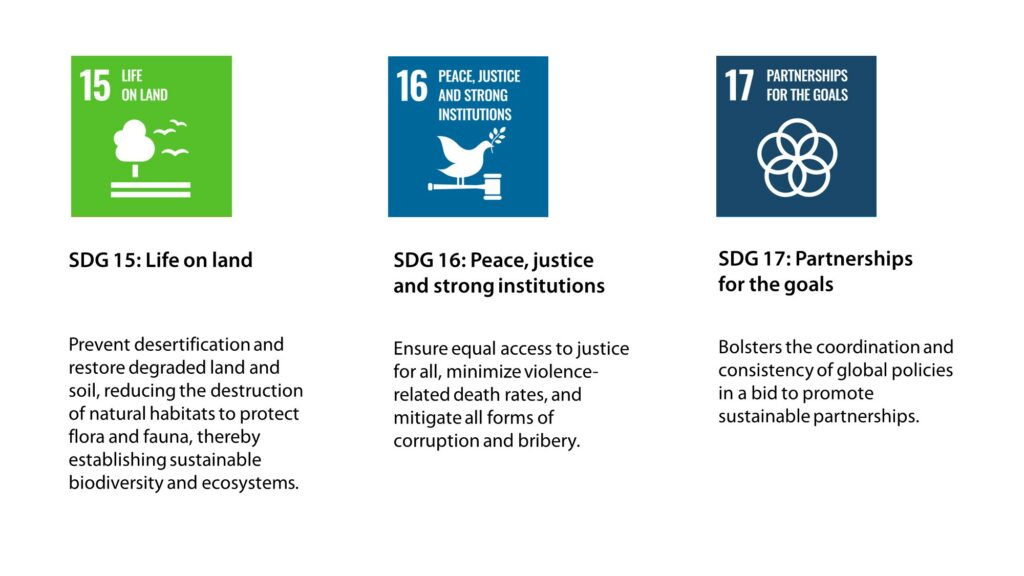
SDG 15: Life on land
The land provides oxygen and food and regulates the climate, making it crucial to the survival of humanity. Human activities have altered nearly three-fourths of the Earth’s surface, driving one million species of animals and plants to the verge of extinction. Also, the rate of degradation of arable land has reached 30 to 35 times the historical average. SDG 15 hopes to prevent desertification and restore degraded land and soil, as well as reducing the destruction of natural habitats and terminating the sale of endangered species to protect flora and fauna, thereby establishing sustainable biodiversity and ecosystems.
SDG 16: Peace, justice and strong institutions
The world is still inundated with conflicts and frequent occurrences of corruption. SDG 16 hopes to establish institutions of legal equality, effectiveness, and transparency to ensure equal access to justice for all, minimize violence-related death rates, and mitigate all forms of corruption and bribery.
SDG 17: Partnerships for the goals
Strengthen global partnerships and collaborations to realize the SDGs and create a common vision centered on people and Earth. SDG 17 lends international support to developing countries, including funding, technology, and policy formulation, and it bolsters the coordination and consistency of global policies in a bid to promote sustainable partnerships.
The above information is extracted from the UN’s Sustainable Development Goals website
Why are the Sustainable Development Goals important to us?
The SDGs offer a blueprint for the future peace and prosperity of all people, and they are the most widely recognized way to materialize sustainability. If all countries, organizations, and individuals can embrace the SDGs to devise their plans, the consistency and coordination of everyone’s vision can be ensured during implementation, as well as improving aspects that are relevant to us to embrace a better future.












